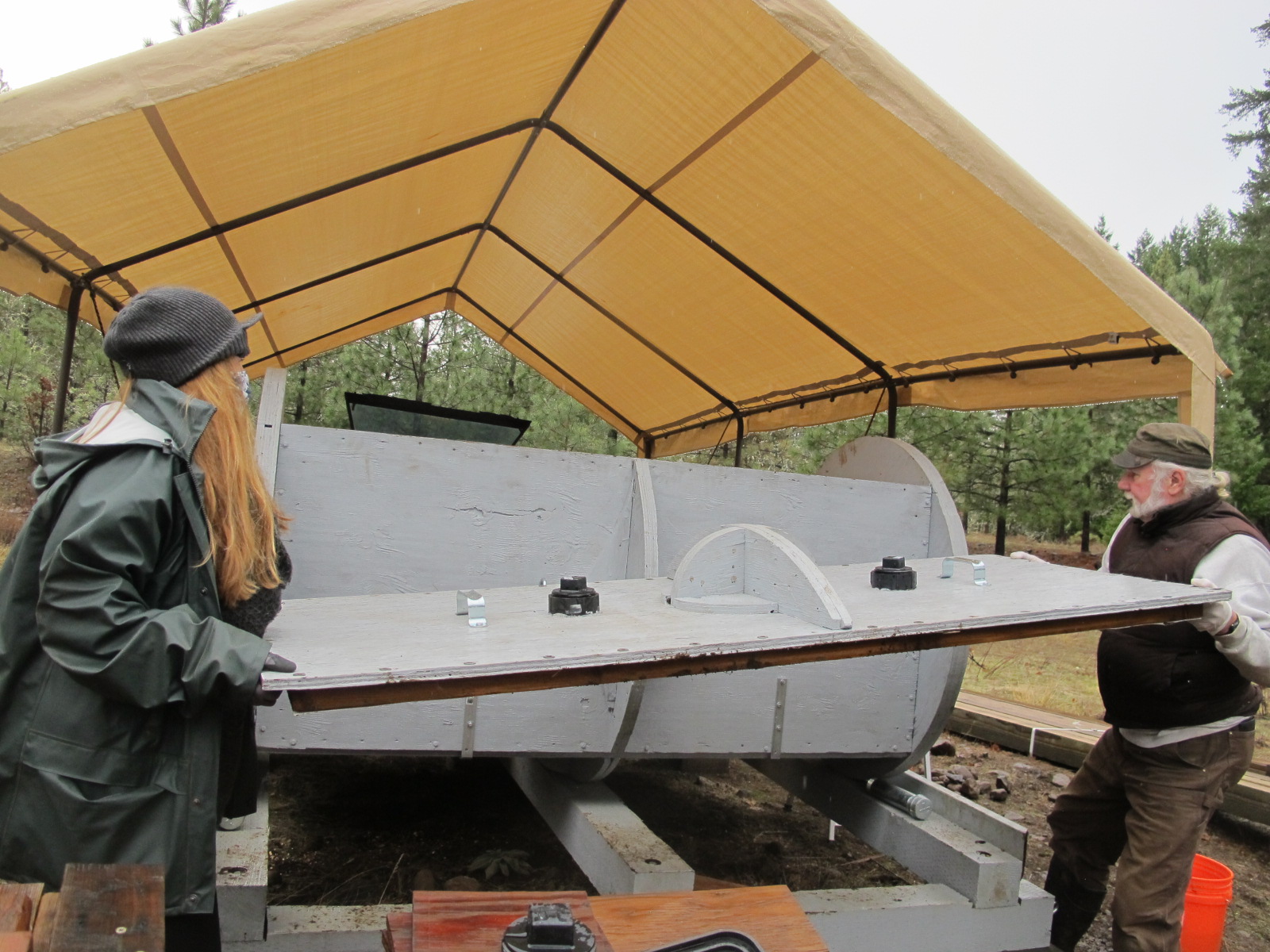KLICKITAT COUNTY, Wash. (KOIN) — Walt Patrick slowly rolls a giant wooden spool-shaped cradle back and forth. Inside, a human body is gradually being turned into compost, one of the first licensed “natural organic reductions” to be performed in the entire country.
“This is simply another option at a time when people feel they have no options,” Patrick said. “You know, death has intervened and changed your life forever. How can you do something at least to make it the way you want?”
Patrick is the senior steward at Herland Forest, a natural burial cemetery and nonprofit research center located north of the Columbia River Gorge in Klickitat County. Natural organic reduction (NOR) has given them a second way to return bodies to the land.
In 2019, Gov. Jay Inslee signed legislation making Washington the first state to approve composting as an alternative to burying or cremating human remains. Advocates say composting is a greener alternative to cremation because it uses less energy. It’s also the only legal way for Washingtonians to be laid to rest on their own property, albeit in the form of mulch.
The new law took effect in 2020. It took a while to get the cradle rolling, though.
There are three facilities in Washington licensed to perform Natural Organic Reduction. Herland Forest and Seattle-based Recompose both received their first bodies in December, while Return Home out of Auburn expects to open later this year.
Patrick calls the process of placing someone’s remains in the NOR vessel an “investment” and says it could take several weeks until the composting process is complete. So how does it work? Read on if you’ve got a strong stomach, otherwise scroll past the photo gallery.
The body is placed in the NOR cradle along with 200 gallons of wood chips. Facilitators add a mix of bacteria, protozoa and fungi to speed up the reduction process. Oxygen is repeatedly added to the cradle to keep it in the 145-155 degree range. Patrick also has solar panels hooked up to add extra heat when needed. The cradle is periodically tumbled to help disperse oxygen throughout the chamber.
Humans tend to have a lot of unnatural materials in their bodies, though, like dental fillings, screws and pacemakers. That all has to be filtered out after the bulk of the decomposition is done, Patrick said. They also crumble up the bones to release the phosphorus.
After that, Patrick said they’ll have four, 55-gallon drums full of usable compost. The family can take all of it, or donate a portion to Herland Forest where it will be used to help grow new trees in the cemetery.
Herland Forest doesn’t have any more investments lined up just yet, but Patrick isn’t worried. His goal is just to give people another option.
“We’re in the cemetery business, so your customers are deciding what it is they want,” he said. “That’s why we just built the one unit because we didn’t know what kind of interest people would have in it and we didn’t want to commit a huge amount of resources to a path that may or may not be well accepted.”
The folks at Herland Forest may build more NOR cradles if there’s enough demand, which the early hype around Seattle’s Recompose suggests there just might be.
A spokesperson for Recompose told KOIN 6 News they’ve started the process with eight bodies so far and have 420 “Precompose” members who have paid in advance for their future death care.



